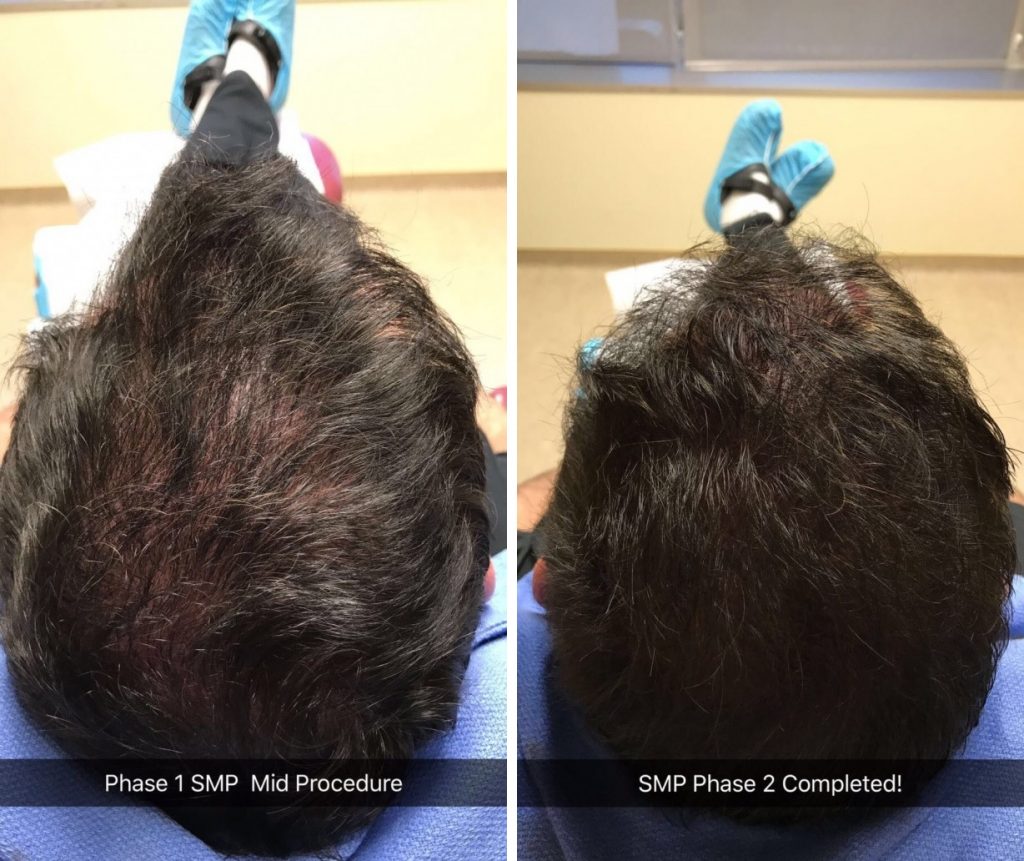What is Scalp Micropigmentation?

Table of Contents
Toggle
Looking for a natural and more youthful look and a non-invasive alternative to hair transplant surgery? Scalp micropigmentation might just be the procedure for you. In this article, we will explain what is scalp micropigmentation and what it offers to patients experiencing hair loss.
Scalp Micropigmentation Explained
Also known as SMP, scalp micropigmentation is a tattooing technique in which minute, metabolically inert pigment granules are implanted below the epidermis with artistic strokes, mimicking the short hair appearance of a closely shaved scalp. It is an ancient Asian beautification practice that has gained popularity around the world. Scalp micropigmentation may be used in ways such as:
- To enhance hair transplants
- As part of hair transplant repair procedures
- To camouflage linear scars
- As an alternative to hair transplant surgery
Because it is used to create the look of thicker or denser hair, it is an excellent way to blend scars, hypogonadism or partial alopecia, or filling thinning areas into a patient’s natural hair.
Scalp Micropigmentation is bio-absorbable by the immune system through Phagocytosis in approximately two years. If, for any reason, a patient decides to use other treatment techniques, the Scalp Micropigmentation performed earlier, does not create any constraints or deterrents for additional treatments. The pigment simply fades away but does not change color.
Preparations Before and After SMP
Before operations, patients are asked to refrain from aspirin, Vitamin E, alcohol, caffeine and blood thinners for 5 days.
After the treatment, with scalp micropigmentation potentially requiring two procedures for optimum outcomes, patients can expect to experience scabbing as a normal part of the healing process. Moreover, some of the pigment may scale off with the scabbing. Patients commonly retain 70-80% of the pigment though 20-30% of the pigment may be exfoliated with the scabs. Succeeding treatment, if required, should be scheduled 6-8 weeks after the procedure.
Slight bleeding or oozing may occur from the treated area; this is completely normal and will subside within 24 hours.
To promote healing, patients are advised to observe the following instructions:
- Allow the area to be open to the air as much possible.
- Avoid prolonged sun exposure for 6 weeks.
- Remember that slight redness or tenderness can occur following the procedure this typically lasts up to three days.
- No harsh chemical procedures done directly on the treated area for 4 weeks following the procedure.
- Avoid saunas, swimming, hot tubs and chlorine, as chlorine can generally speed up the fading in the area treated.
- Do not rub, pick or scratch the treated area following the procedure.
- Avoid the use of Minoxidil, Formula Z82, or Rogaine directly on to the treated area for 4 weeks following the procedure.
Swelling is part of the healing process. The degree of swelling varies with each patient from mild to pronounce. To minimize the degree of swelling you should do the following:
- Apply ice packs, wrapped in a clean cloth as frequently as possible below or above the eyebrows, above or below the facial hair zones.
- If significant swelling persists after 3 days, discontinue the ice and use warm compresses.
- It is optional to sleep with one’s head elevated at 45 degree angle for 3 nights following your procedure. This can be done by using at least three pillows supporting the back and neck in bed. A travel pillow can also be used.
If redness, excessive swelling, blistering or excessive bruising occurs patients should immediately contact Ziering Medical.
When it comes to pain medication, patients experiencing discomfort can take aspirin-free medication such as regular or extra-strength Tylenol. They are advised not to take pain medication while driving, working or operating any machinery due to possible drowsiness. And any medication containing aspirin is contraindicated for 10 days.
When it comes to exercise, for three days after the procedure, patients must refrain from any strenuous activities that would increase blood pressure, such as: jogging, stretching and weightlifting. When picking up items from the floor, patients are advised to bend at the knees while keeping their back straight to avoid having the head go below the level of the heart.
Hair Care
For hair care, gels, moisturizers and oils may be used after 10 days. Hair coloring products should not be used until 4-5 weeks after procedure – this is to be better able to visually track the healing process of the operative site.
Patients must not wash the treated area the day of the procedure. They may begin to wash the area with non-alcoholic based shampoo 3 days after the procedure. Also, they must avoid using any shampoo which may contain alcohol for 2 weeks after the procedure.
SMP Outcomes
All permanent cosmetic procedures will initially appear larger, brighter, or darker than what is expected for the desired final outcome. It will take time for this transition, based on how quickly the outer layer of the skin exfoliates. Ultimately, the procedure results will last 20 – 36 months varying on skin type and chemical products used daily on scalp.
Takeaway
Scalp Micropigmentation restores a natural, more youthful look, with potentially positive psychological effects, such as a boost in confidence.
Currently, this non-surgical procedure is only available in our Beverly Hills and Newport Beach locations.
